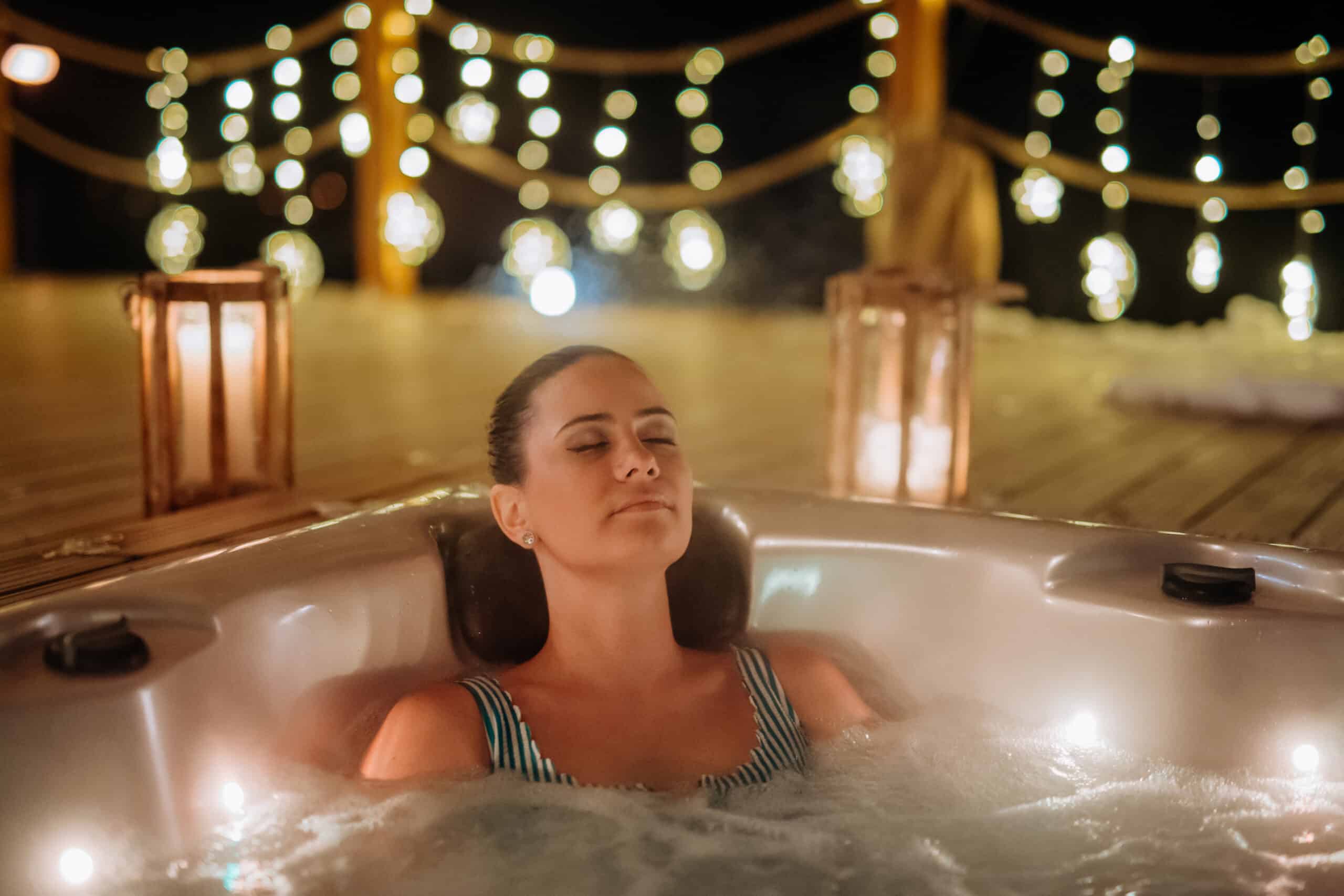Table of Contents - What is Hot Tub Therapy?
This blog post may contain affiliate links. As an Amazon Associate I earn from qualifying purchases.
What is Hot Tub Therapy?
We all enjoy soaking in warm, bubbly water after a long day. But this isn’t just a luxury, it’s also an effective form of therapy known as hot tub therapy. In this article, I want to cover what hot tub therapy is, its benefits, and how you can incorporate it into your overall health and well-being routine.
The History and Origins of Hot Tub Therapy
Hot tub therapy isn’t new, in fact, it can trace its roots back to some of the most ancient civilizations on earth. The ancient Romans, Greeks, and Japanese all recognized the benefits of hot springs and warm water. Over time, these practices evolved, and technology was developed that allowed hot tubs to exist. In modern times, you don’t need to live near a hot spring to enjoy the benefits of soaking in warm water, now everybody can enjoy hydrotherapy.
What is Hot Tub Therapy?
Hot tub therapy, also known as hydrotherapy, is therapy which involves using heated water to relieve pain and improve physical and mental health. A combination of hot water immersion, the use of water jets for massage, and the addition of minerals to the water can have a positive effect on most people.
Hot tub therapy uses the properties of heat, buoyancy, and massage to create an all-round healing experience.
The Benefits of Hot Tub Therapy
There are both physical and mental benefits to hot tub therapy. While not everyone will experience all of these, very few people will say they felt no benefit from hydrotherapy.
Physical Benefits
1. Pain Relief:
Hot water can help relax muscles and reduce pain. This makes hot tub therapy a good treatment for conditions like arthritis and fibromyalgia, as well as general muscle tension and soreness.
2. Muscle Relaxation:
The buoyancy of hot tub water reduces effective body weight by about 90%, which relieves pressure on joints and muscles.
3. Improved Circulation
Warm water causes blood vessels to dilate, which can enhance blood flow and improve circulation. This is known to be beneficial for conditions like high blood pressure.
Mental Benefits
1. Stress Reduction:
The pleasant feeling of being in a hot tub, combined with the massage effect from the water jets can help with overall relaxation and stress reduction.
2. Improved Sleep:
A hot tub at the end of the day can help your body and mind wind down and help you get to sleep more easily.
3. Enhanced Mood:
The combination of physical relaxation and the reduction in overall stress can have a drastic effect on your mood. One of the things I love about a soak in a hot tub is that it’s a luxury that doesn’t cost me a lot of money and doesn’t contain any calories!
How Does Hot Tub Therapy Work?
Heat, buoyancy, and massage are the three main factors in hot tub therapy. Heat increases blood flow and relaxes muscles, buoyancy reduces strain on joints and muscles, and water jets massage your muscles and encourage the release of endorphins.
Conditions That Can Be Treated with Hot Tub Therapy
You should not use hot tub therapy as a substitute for proper medical care. If you are suffering from a health condition, you should consult with your doctor for proper medical care. However, you can use hot tub therapy to complement your medical care.
– Arthritis and Joint Pain:
Regular hot tub soaks can help to reduce stiffness and improve your joint mobility.
– Muscle Injuries and Recovery:
It is common for athletes to use hot tubs to reduce muscle soreness and improve their recovery time during training.
– Stress and Anxiety:
The relaxing effects of a hot tub soak can help reduce stress and anxiety.
– Insomnia and Sleep Disorders:
Reducing stress and anxiety has the added benefit of improving sleep schedule and quality.
How to Use Hot Tub Therapy Safely
Hot tub therapy is generally safe but there are a few steps you can take to both maximise its effectiveness and reduce any associated risks.
– Time Limit
Limit your sessions to no more than 30 minutes at a time.
– Temperature
Maintain water temperature between 100°F to 104°F.
– Hydration
Hot tubs can cause you to sweat, so stay hydrated and avoid alcohol.
– Hygiene
Ensure your hot tub is properly maintained and that you clean it regularly to avoid bacteria growing.
– Precautions
If you have cardiovascular issues, are pregnant, or have any other health concerns which might affect your body’s ability regualte its circulation or temperature, you should consult with your doctor.
Setting Up Hot Tub Therapy at Home
While you can have hydrotherapy at a spa, it is much nicer to have your own setup at home. Doing so requires you to choose the right equipment and ensure proper maintenance.
– Choose the Right Hot Tub:
Look for a hot tub with features like temperature control, and adjustable water jets Look for features like adjustable jets, temperature control, and comfortable seating.
– Accessories:
Accessories like water-proof pillows and aromatherapy products can really elevate your hot tub therapy experience.
– Maintenance and Care:
Check your hot tub’s pH levels, clean your filters regularly, and use the right amount of bromine and chlorine.
How Hot Tub Therapy Helped Me
I’m very tall and I work at a desk job. These two factors, along with my propensity to slouch, have left me with a lot of discomfort and back pain. However, since I bought a hot tub, I have found that my back pain has lessened significantly.
I usually take 4-5 hot tub soaks a week, which I know sounds like a lot, but each one only takes about 15 minutes and I have found that it has been a simple addition to my evening routine. It’s reduced my back pain and also helped with my overall stress levels. My wife also says I’m sleeping better and not tossing and turning as much.



